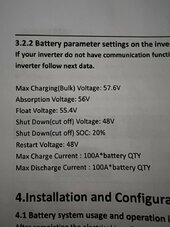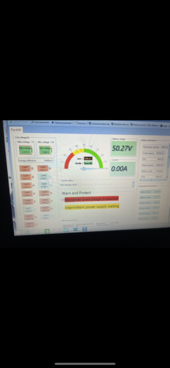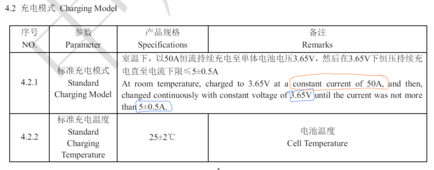I have purchased two 48v 100ah batteries from China.
Upon arrival the batteries charged at the max rate of 3kw until 60% charged. I presume they then went in to balance mode as the rate then dropped to around 500w. This normally happens at 90% I believe.
The Chinese company suggested I change the 4 values that I have attached in the image.
This fixed the charging issue at 60% and increased it to 95%!
It has now led to another issue. At 100% charge the batteries display “Monomer Overvoltage protection” (I have attached images).
The inverter throws an error to preventing discharge.
Obviously changing the values has fixed one issue but caused another?
Can anyone see anything obvious that would be causing this? Should the monomer voltage be higher?
Thanks in advance!
Upon arrival the batteries charged at the max rate of 3kw until 60% charged. I presume they then went in to balance mode as the rate then dropped to around 500w. This normally happens at 90% I believe.
The Chinese company suggested I change the 4 values that I have attached in the image.
This fixed the charging issue at 60% and increased it to 95%!
It has now led to another issue. At 100% charge the batteries display “Monomer Overvoltage protection” (I have attached images).
The inverter throws an error to preventing discharge.
Obviously changing the values has fixed one issue but caused another?
Can anyone see anything obvious that would be causing this? Should the monomer voltage be higher?
Thanks in advance!









